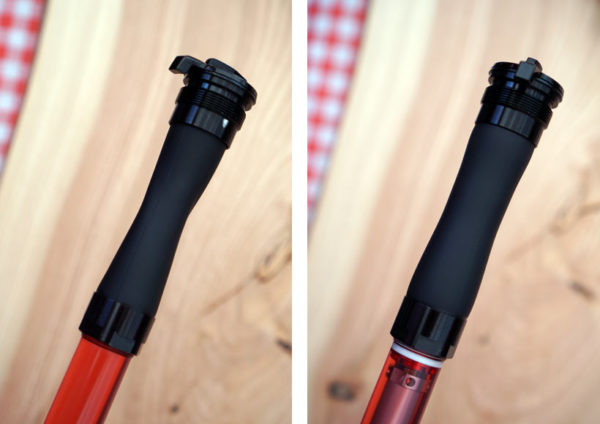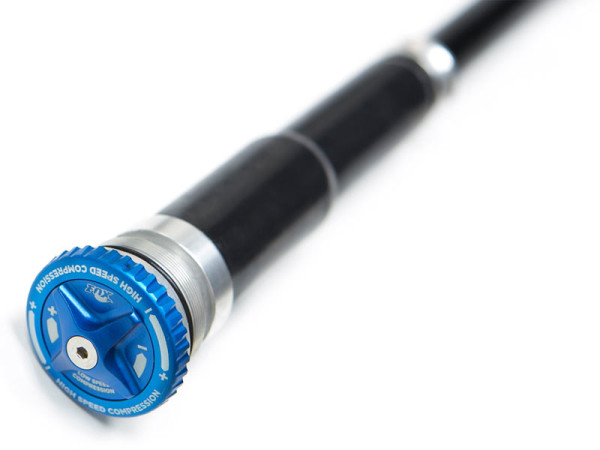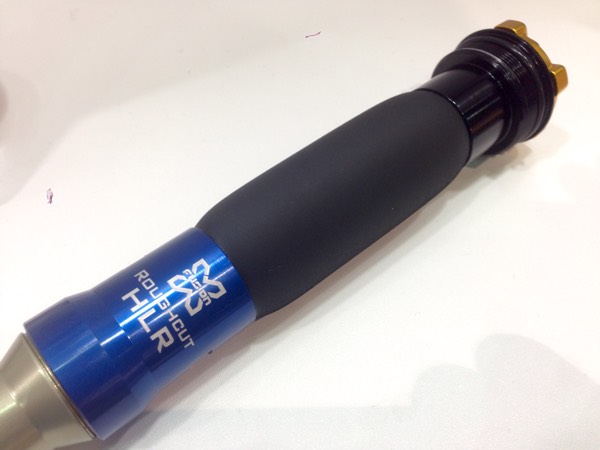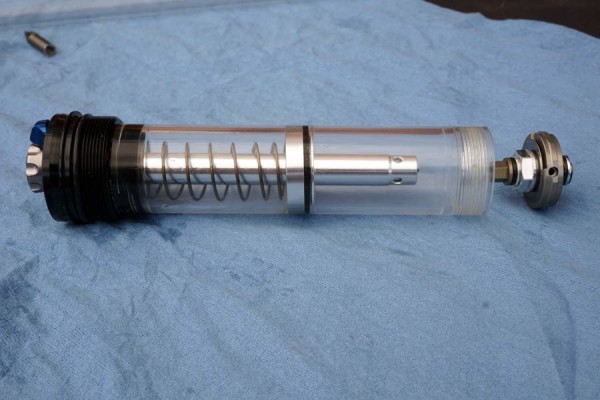After last week’s explanation of an IFP (Internal Floating Piston) as the primary method for keeping the oil inside a shock’s damping circuit away from air, we turn our attention to forks. Quick refresher: The oil in your suspension flows through compression and rebound damping circuits, and that’s how the motion is managed so you’re not just bouncing down the trail uncontrollably. It’s the “shock” part of your suspension that controls the “spring”. As oil is pushed through the compression circuit, some of it recirculates behind the piston, but the overflow has to go somewhere.
On rear shocks, there’s usually a reservoir backed by an IFP. In forks, it’s a little different…

If, as the oil is pushed through the compression circuit, the oil were to go into an open chamber, there’s a chance it would slosh around, create foam, and small bubbles would get sucked back through the circuit during rebound. Those circuits are finely tuned to perform with a specific oil viscosity. Introduce air or anything else, and the fork will behave much differently. Since air is much less dense than oil, things can get out of control fast. So, most modern forks separate air and oil to create what’s called a “closed cartridge”.
Shown above, Rockshox’s Charger Dampers enclose the damping cartridge system inside a bladder. As oil is pushed through the circuit during compression, it expands the bladder. During rebound, oil is pulled back through and it deflates. The bladder creates a seal between the oil and outside air, preventing them from mixing.

Fox has been doing this with their FIT dampers for years. More recently, X-Fusion (top of post) and DVO have done the same. It’s a lightweight, simple solution that also makes swapping out cartridges easier should they need replacement.
SR Suntour has taken a different approach. On their high end forks with the R2C2 damper, they use a Piston Compensator System. It’s very similar to the IFP in a rear shock in that it uses a piston to separate the air and the oil. The difference is they use a coil spring rather than a nitrogen charge to push back against oil overflow. They say that no matter how well a rubber bladder seals, it’ll eventually need to be bled, and their system makes that easier when the time comes.
Regardless of method, your fork will perform best when air and oil are kept separate, kinda like siblings after a few hours in a car.

